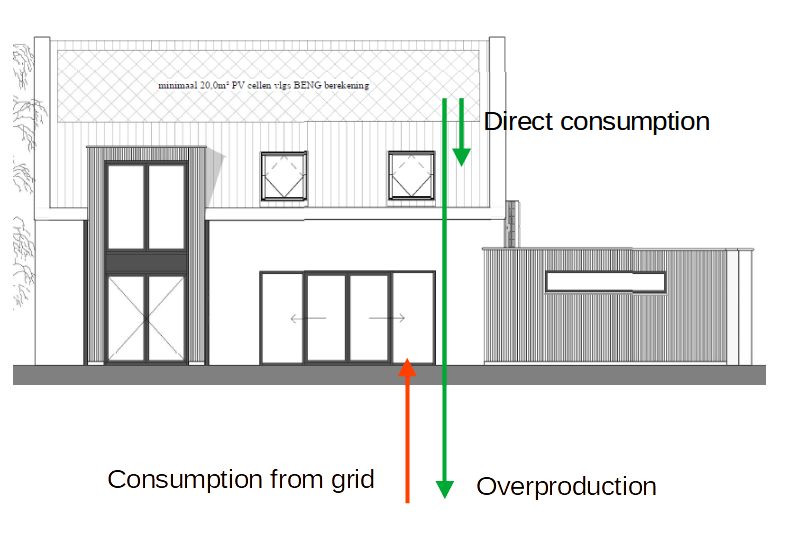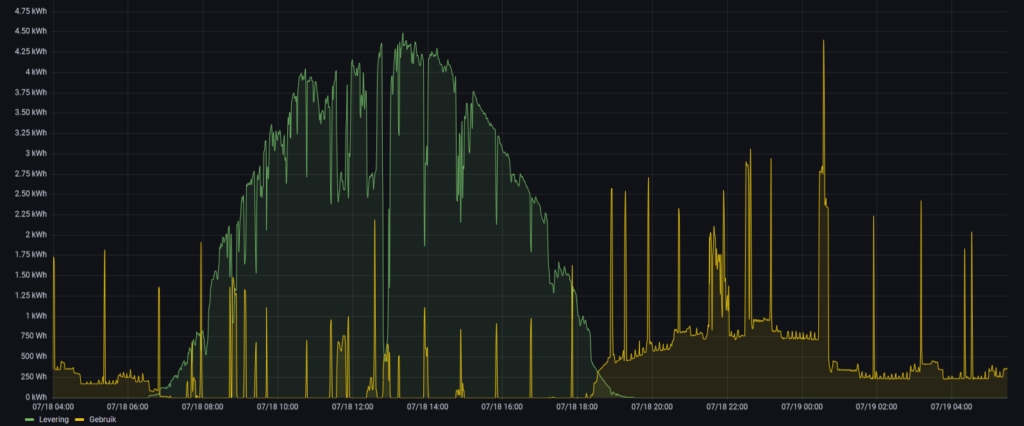One of the goals of building a digital twin of our house is to reduce our dependence on external energy sources. To achieve this goal, and to validate if my measures are having a positive effect, I need to compute our dependence on external energy sources. Our house will be fully electric, so that makes things a bit easier as I don’t have to take gas into account.
Basically, we will have two sources of energy (the grid and the PV (solar) panels) and one consumer: the house itself, including all the appliances consuming energy.

External energy, in this context, is energy consumed from the grid. I calculate the total amount of energy we consume using:
total_consumption = pv_production + grid_consumption - pv_overproductionWhen the PV panels are not producing energy, there will not be any overproduction, and the total_consumption will be equal to the grid_consumption. When there is no grid_consumption and the PV panels are producing sufficient energy to meet the demand, the total_consumption is equal to the pv_production minus the pv_overproduction.
I’m interested in our dependence from the grid. This is then an easy next step:
dependence = grid_consumption / total_consumptionThis gives me a number that gives me the amount of energy consumed from the grid related to the total consumption. Initially, I will calculate our dependence based on 30 minute intervals.
The good news is that I already have the data, but it’s spread over multiple time-series. I’m building a small service that consumes the required data from the time-series, computes the dependence, and writes it back into a new time-series for historic analysis.

